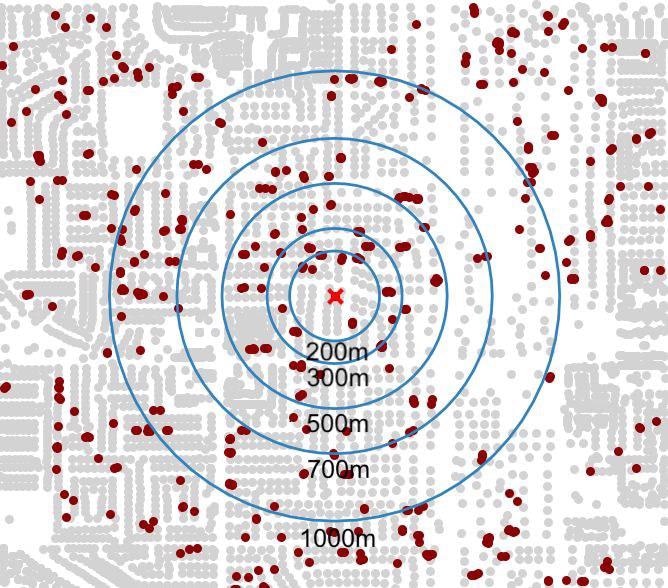Apr 22 2021
The most significant factor in finding the probability of a house having a solar panel, when compared to a host of demographic and socio-economic variables, is the number of solar panels present within the shortest distance from that house.
 Solar panels as red dots in Fresno city grid. Image Credit: Fig. 1 from Henry et al., 2021.
Solar panels as red dots in Fresno city grid. Image Credit: Fig. 1 from Henry et al., 2021.
A new study by a team of researchers demonstrates this by making use of satellite and census data of the city of Fresno in the United States, and applying machine learning. It is obvious that peer impacts govern sustainable energy choices, but very high-resolution data along with artificial intelligence methods were essential to pick out the paramount significance of proximity.
The result is applicable for policies with the goal of making an extensive deployment of solar panels to substitute unsustainable fossil-fueled energy generation.
It’s almost like if you see a solar panel from out of your window, you decide to put one on your own roof as well. Of course, one might think that other factors are more relevant, for instance income or educational background, or word-of-mouth within the same social network such as a school district.
Leonie Wenz, Study Author, Potsdam Institute for Climate Impact Research
“So we compared all these different options, and we’ve been amazed by the outcome. It turns out that, no, geographical distance really is the most important factor. The more panels there are within a short radius around my house, the more likely I’m of having one, too,” added Wenz.
Peer Effect Halves over the Distance of a Football Field
“The likelihood of putting a solar panel on your roof roughly halves over the distance of a football field. The contagion effect is strongest for a short radius around a home with a solar panel and decreases exponentially the farther away the panels are. It is a remarkable robust feature that is most pronounced in low-income neighborhoods,” stated Anders Levermann from PIK and Columbia University’s LDEO in New York, who is also an author of the study.
The researchers just made the data speak.
We combined population census data for every district with high-resolution satellite data that is able to identify all the solar panels in Fresno. Then we trained several machine learning algorithms to find the relation between people’s socio-economic setting and their likelihood of having a solar panel.
Kelsey Barton-Henry, Study Author, Potsdam Institute for Climate Impact Research
Seeding Solar Panels Where Few Exist may Flip a Community
“The findings suggest that seeding solar panels in areas where few exist, may flip a community,” concluded Levermann.
If more solar panels lead to more solar panels that may generate a kind of tipping point – a good one this time. The climate system has a number of extremely dangerous tipping points from the West Antarctic ice sheet to the North Atlantic Current. Hence, researching climate decisions to identify positive social tipping points, both small and big ones, is important to ensure a safe tomorrow for all.
Leonie Wenz, Study Author, Potsdam Institute for Climate Impact Research
Journal Reference:
Barton-Henry, K., et al. (2021) Decay radius of climate decision for solar panels in the city of Fresno, USA. Scientific Reports. doi.org/10.1038/s41598-021-87714-w.